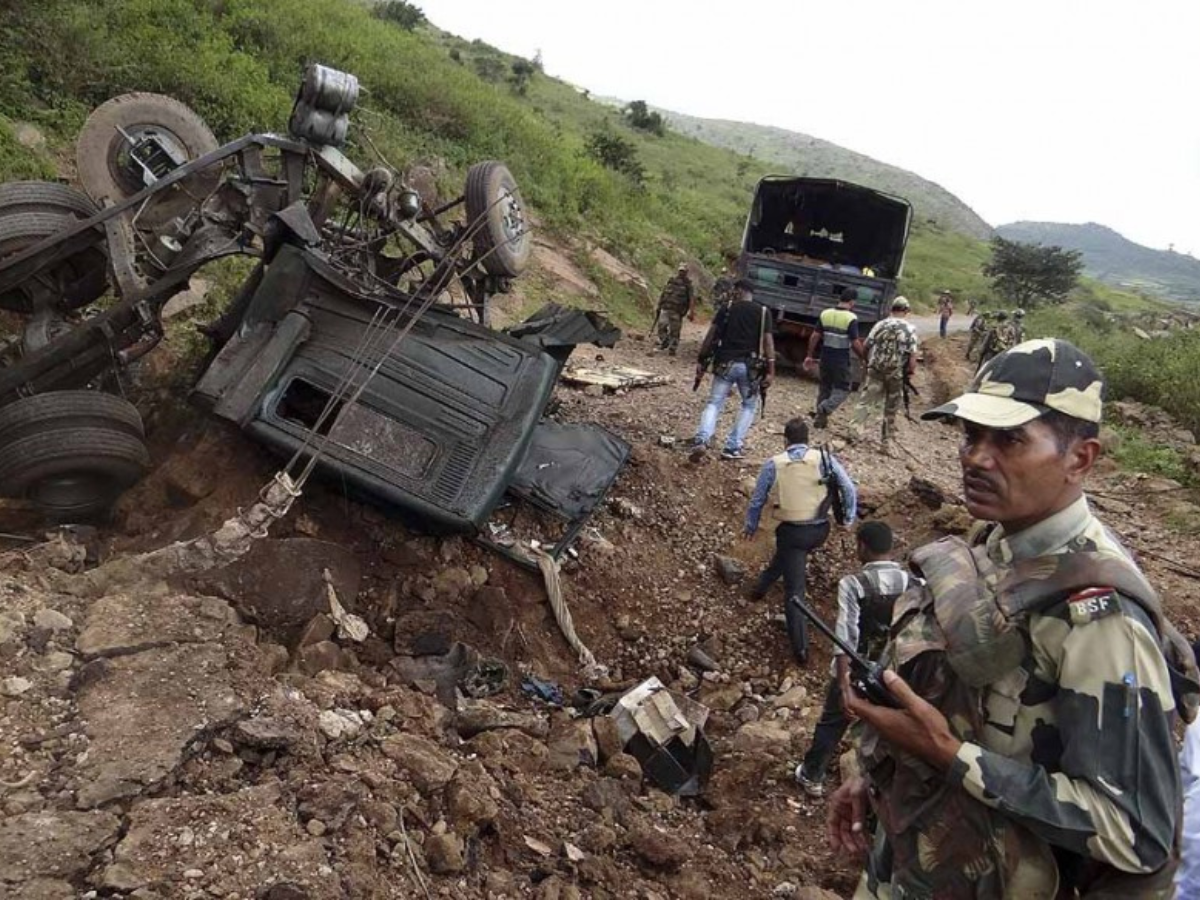The Naxal ambush on Wednesday brought attention to what is seen as the last big challenge for security forces in Chhattisgarh: stopping Improvised Explosive Device (IED) attacks in the forested tri-junction in Bastar region.
Security officials say that these things happen because there isn’t a foolproof way to find IEDs and because the Naxals are getting more desperate and are trying to avoid direct combat with the forces working to totally wipe out LWE (Left Wing Extremism) in the State.
“The Naxals’ most recent attack on the security forces in the State was the biggest one in the last two years.” Extremists blew up their car in the Aranpur area of Dantewada district, killing ten members of the district reserve guard (DRG) and their driver. The explosion made a hole in the road that was nearly 10 feet deep, split the road in two, and totally destroyed the car.
The most of these attacks happen in the area where Chhattisgarh, Telangana, and Odisha meet at the southern tip of Sukma district in the south Bastar region. This is where the deadly Maoist ambush in Dantewada in 2010 happened, killing 75 CRPF and one Chhattisgarh police officer.
Left Wing Extremism (LWE) is almost gone in Jharkhand and Bihar, according to the Union government. This is because security forces have been working hard, and Naxal violence has gone down by 77% in just over a decade.
But security officials say that the threat of IEDs that have been put there without being seen “continues to pose a challenge” to them, especially in the border areas of south Chhattisgarh.
“A general alert was sent to the security agencies saying that the Naxal-sponsored TCOC [tactical counter-offensive campaign] time is on and that they should be careful when doing operational and administrative tasks.
“Unfortunately, the Naxals were able to get the DRG car trapped in Dantewada. “This is being looked into to find out what happened,” a top security officer in Delhi said.
The TCOC is a military operation that the Maoists did from March to June to strengthen their cadres and start major attacks on security forces. This was done because the forests were stripped of their green cover, making it easier to see and ambush.
The Dandakaranya Special Zonal Committee of the Maoists runs these areas. It is led by the “elusive” Hidma, who is said to be the commander of the PLGA battalion no. 1, which is blamed by police for planning and carrying out hundreds of ambushes against the forces over the last 20 years.
By building bases and roads in faraway places, the forces are trying to “capture, dominate, and hold” these areas. A security officer in Bastar said that the Central Reserve Police Force (CRPF) has set up as many as 15 forward operating bases in Chhattisgarh in the last three years, and more are on the way.
The officer said that these bases are being built so that small groups of troops based there can effectively attack the Naxals in their core areas and make it safe for government agencies to start building projects there.
Forces and government bodies that work in these areas also have to deal with things like remote locations, dense forests, and poor cell phone service.
“However, we are still working on it, and we hope to get good results, including getting rid of the possibility of attacks and ambushes on police patrol parties that could kill people,” the second officer said.
A Central Reserve Police Force (CRPF) officer said that the IEDs still cause a lot of trouble because of two things.
The first is that the Maoists don’t want to fight one-on-one because they’ve run out of high-tech guns, rifles, and bullets. Instead, the officer said, they choose to start surprise attacks instead.
They don’t always succeed because the forces have learned not to take the “beaten path,” but the officer said that when they do, a number of security people are killed or hurt.
“The second problem is that we still don’t have a way to find IEDs that can’t fail. They are put under blacktop roads or hidden under culverts or bridges. When a security car or patrol passes by, they are set off by a person sitting far away.
Many IEDs go off even when the troops are on foot, because the pressure of their feet is enough to set off the trigger. Over the last two years, these things have hurt more than 100 people, the cop said.
“The last Maoist strongholds to be taken are south Bastar, the places around it, and the IEDs. “This goal is being worked on by the forces,” he said.
In December 2022, the Union government told Parliament that the number of violent acts by Naxals had dropped by 77%, from a high of 2,213 in 2010 to 509 in 2021.
In a written answer to Lok Sabha, Minister of State for Home Nityanand Rai said that the number of deaths caused by the violence dropped by 85%, from a high of 1,005 in 2010 to 147 in 2021. He also said that the trend of fewer deaths continued in 2022.
The Minister also said that the violence has become much more localized. In 2010, 465 police stations in 96 districts reported violence linked to LWE, but in 2021, only 191 police stations in 46 districts did.
The number of districts covered by the Security Related Expenditure Scheme has also gone down, which shows that the area is getting smaller. He had said that the number of these areas would go down from 126 to 90 in April 2018 and then to 70 in July 2021.
He also said that the number of districts responsible for about 90% of LWE violence, which he called “most LWE-affected districts,” went from 35 in 2018 to 30 in 2019, and will go down to 25 in 2021.
